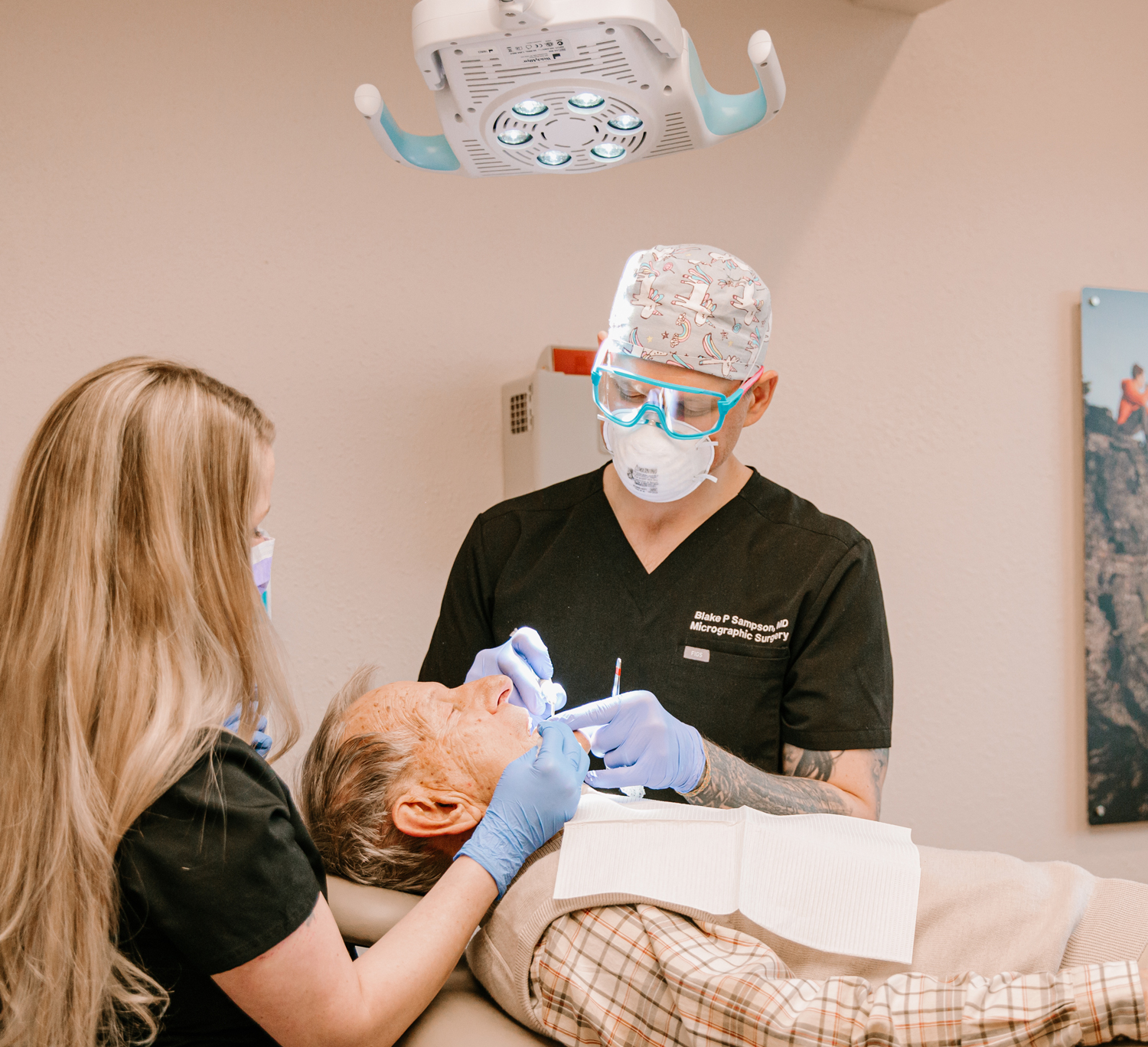Mohs surgery is appropriate when:
MOHS Surgery

Mohs Surgery
Mohs micrographic surgery is a highly effective, precise surgical procedure used for the treatment of skin cancers. It’s known as the foremost technique for removing basal cell carcinomas and squamous cell carcinomas, with success rates of up to 99%.
Mohs is usually recommended for large or aggressive tumors, those in delicate and hard-to-reach places, and tumors that have returned after previous treatment.
What is Mohs?
Mohs is a form of treatment that involves layer-by-layer removal of skin tissue and immediate examination and identification of cancerous cells that allows surgeons to microscopically examine 100% of the surgical margin and preserve as much healthy tissue as possible. In many cases, Mohs is done in stages. The surgeon removes the skin tissue and conducts lab work while the patient is in the office. This allows for the precise removal of all cancer cells and real-time lab work to check progress and ensure the removal of all cancerous tissue. The Mohs surgical process also seeks to preserve as much healthy tissue as possible, disturb as small an area as possible, and reduce scarring to the absolute minimum.
The minimal scarring produced by Mohs surgery makes this an ideal treatment for highly visible skin cancers such as those on the head and neck. The technique was pioneered by Dr. Frederic E. Mohs in the 1930s and has been refined over the years into the most effective treatment for certain skin cancers.

The Advantages of Mohs Surgery

Is Mohs Right for Me?
How do you know if Mohs surgery is right for you? We generally recommend this procedure for people who meet the following criteria:
- The cancer is large.
- The cancer has recurred after previous treatment.
- The edges of the cancer are difficult to see with the naked eye.
- The tumor has aggressive characteristics.
- The cancer is in an area where the preservation of healthy tissue for cosmetic and functional reasons is of utmost importance, such as the nose, eyelids, lips, ears, fingers, toes, and genitals.
What to Expect with MOHS
Mohs is performed in the Dermatology Associates office under local anesthetic by Dr. Blake Sampson. You’ll remain awake and alert during the procedure, but Dr. Sampson will ensure that you are comfortable and don’t feel a thing! Here’s a breakdown of what you can expect during the procedure:
Will MOHS be Covered by my Insurance?
Visit with our office staff to discuss insurance and billing information.

